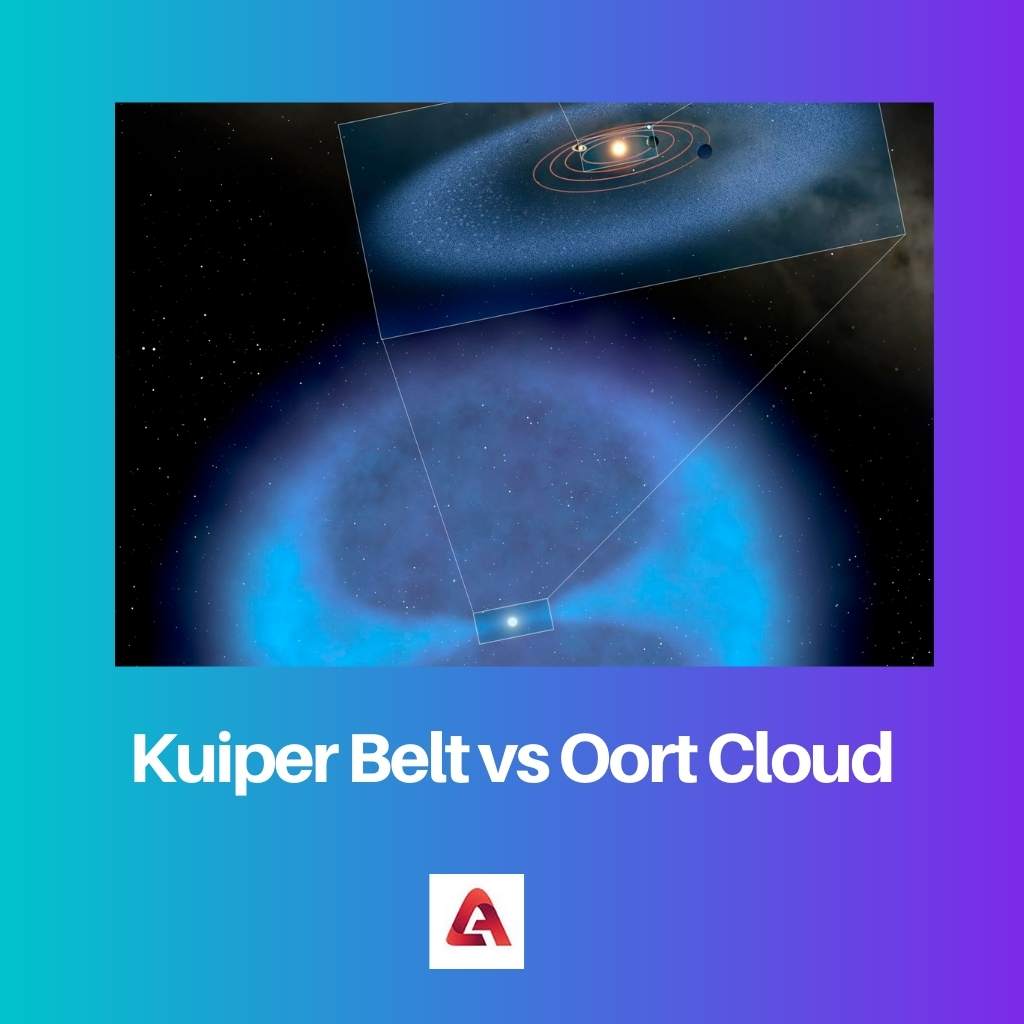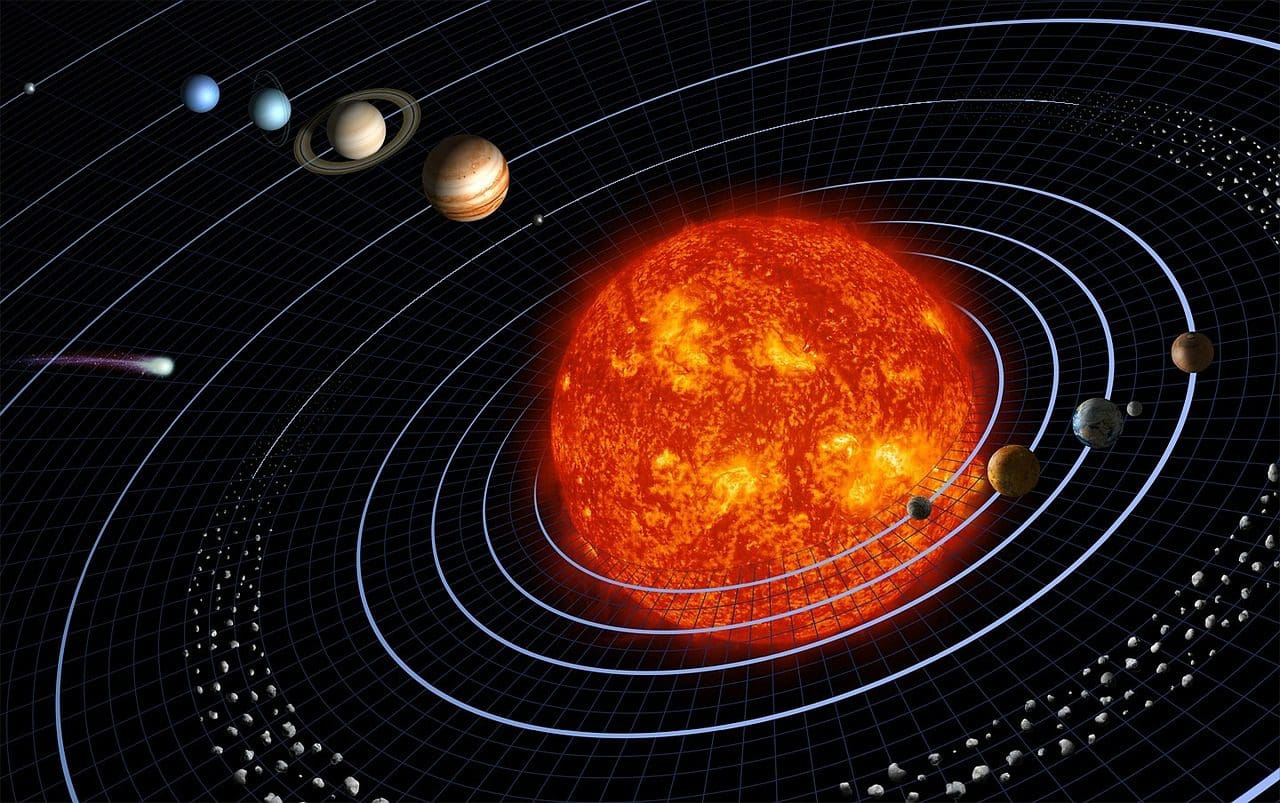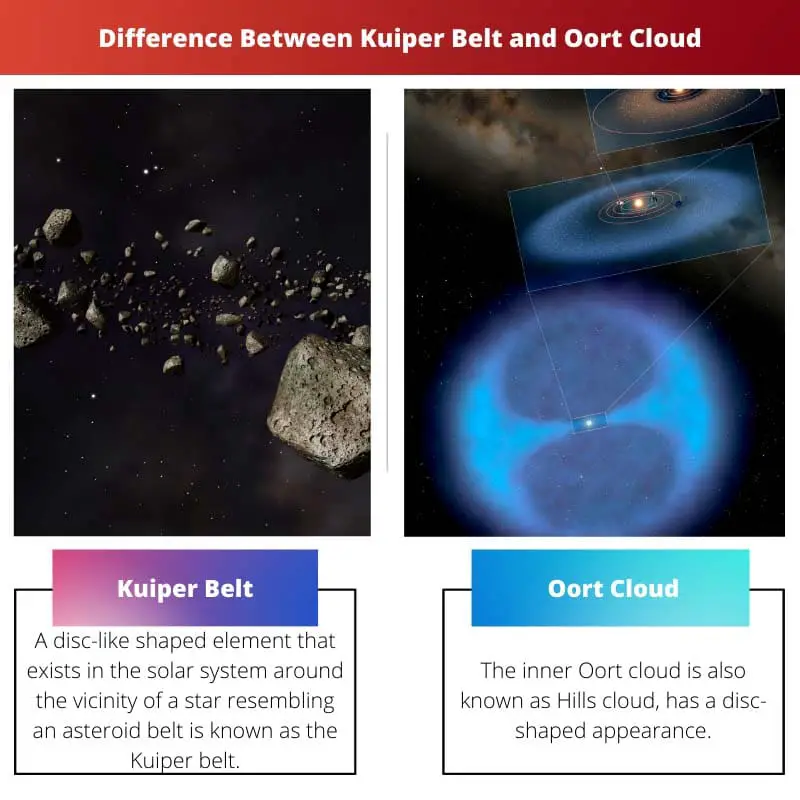There are many variations in the things present in the universe and the solar system, to be specific. These different things have different roles to play in the solar system.
Key Takeaways
- Kuiper Belt is a region of the solar system beyond Neptune, containing mainly small icy bodies. In contrast, Oort Cloud is a theoretical spherical cloud surrounding the solar system, containing icy bodies and comets.
- Kuiper Belt is relatively close to the Sun and contains objects with shorter orbits, whereas Oort Cloud is much farther away and contains objects with longer orbits.
- Kuiper Belt objects are believed to be the source of short-period comets, while Oort Cloud objects are the source of long-period comets.
Kuiper Belt vs Oort Cloud
The difference between the Kuiper Belt and the Oort Cloud is their appearance or their shapes, to be precise. The Kuiper belt has a disc-like shaped appearance. On the other hand, the Oort cloud has a spherical shaped appearance. Other than their appearance, these two elements have other distinguishing characteristic features.

A disc-like-shaped element in the solar system around the vicinity of a star resembling an asteroid belt is known as the Kuiper belt.
The theoretical concept about the description of a cloud that existed in the developing stages of the solar system located surrounding the Sun at a certain distance range is known as the Oort cloud.
Comparison Table
| Parameters of Comparison | Kuiper Belt | Oort Cloud |
|---|---|---|
| Meaning | A disc-like shaped element that exists in the solar system around the vicinity of a star resembling an asteroid belt is known as the Kuiper belt. | The theoretical concept about the description of a cloud that existed in the developing stages of the solar system located surrounding the Sun at a certain distance range is known as the Oort cloud. |
| Named after | Gerard Peter Kuiper | Jan Hedrik Oort |
| Shape | Disc-shaped | The inner Oort cloud is disc-shaped and the outer Oort cloud is spherical-shaped. |
| Location | Beyond the orbit of Neptune. | In the surrounding of the Sun. |
| Objects | Not distributed by the stars and the sun. | Distributed by the stars and the sun. |
What is Kuiper Belt?
A disc-like-shaped element in the solar system around the vicinity of a star resembling an asteroid belt is known as the Kuiper belt. It is made up of methane, ammonia and water.
The Kuiper belt has a resemblance to an asteroid belt. However, the Kuiper belt is much larger than an asteroid belt. The term “Kuiper belt” was derived from the name of a Dutch astronomer, Gerard Peter Kuiper.
A minor planet called Albion was discovered to exist in the Kuiper belt in the year 1992. Initially, the Kuiper belt was considered the storage of short-term comets.
For the exploration of the Kuiper belt, a spacecraft named “New Horizons” was dispatched on 19 January 2006. The main motto of sending the spacecraft was to find and track down other objects in the Kuiper belt.

What is Oort Cloud?
The theoretical concept about the description of a cloud that existed in the developing stages of the solar system located surrounding the Sun at a certain distance range is known as the Oort cloud.
The inner Oort cloud is also known as the Hills cloud, has a disc-shaped appearance. On the other hand, the outer Oort cloud has a spherical-shaped appearance.
Many long-term comets reside in the Oort cloud. Comets with an orbital period greater than 200 years are known as long-term comets.
The Oort cloud is a significant element of the solar system. The Oort cloud not only contains comets but also contains asteroids. It is also considered the defining element of the solar system’s boundary.

Main Differences Between Kuiper Belt and Oort Cloud
- The term “Kuiper belt” is derived from the name of Dutch astronomer Gerard Peter Kuiper. On the other hand, the term “Oort cloud” is derived from the name of Dutch astronomer Jan Hendrik Oort.
- The Oort cloud objects are distributed by the stars or the Sun. On the other hand, the objects from the Kuiper belt are not distributed by the stars and the Sun.

- https://www.nature.com/articles/344825a0
- https://www.sciencedirect.com/science/article/pii/S0019103502000568

The in-depth exploration of Kuiper Belt and Oort Cloud within the context of the solar system is both enlightening and intellectually stimulating, providing a comprehensive understanding of these celestial entities.
I concur, the meticulous detailing of these celestial phenomena offers a profound insight into their significance and contributions to the solar system.
Absolutely, the scholarly approach to elucidating the differences and characteristics of Kuiper Belt and Oort Cloud makes this article a valuable reference for astronomy enthusiasts.
The distinctions between the Kuiper Belt and Oort Cloud are elucidated with precision and scholarly insight, making it an engaging read for anyone interested in astronomy.
The detailed descriptions of the Kuiper Belt and Oort Cloud are presented with scholarly precision, providing a holistic view of their unique characteristics and roles within the solar system.
Indeed, the clarity and depth of information make this article a valuable resource for understanding the distinct features and significance of Kuiper Belt and Oort Cloud.
The comprehensive overview of Kuiper Belt and Oort Cloud provides a detailed understanding of their formation, characteristics, and roles, enriching our knowledge of the solar system’s dynamics.
The comprehensive explanations provided for Kuiper Belt and Oort Cloud are informative and engaging, offering a deeper understanding of their distinctions and contributions to the solar system.
I couldn’t agree more, this article delves into the nuanced details of these celestial phenomena, making it a compelling read for astronomy enthusiasts.
The comparison between Kuiper Belt and Oort Cloud is lucid and informative, offering a compelling analysis of their distinct features and functions within the solar system.
The scholarly elucidation of the differences between Kuiper Belt and Oort Cloud provides a rich understanding of their significance in the grand scheme of the solar system.
Indeed, the detailed exploration of Kuiper Belt and Oort Cloud enhances our comprehension of these celestial elements and their unique contributions to the solar system.
The descriptions of the Kuiper Belt and Oort Cloud are presented with clarity and depth, shedding light on their unique features and significance in the solar system.
Indeed, the detailed information provided enriches our understanding of these celestial phenomena and how they contribute to the dynamics of the solar system.
The section on the differences between Kuiper Belt and Oort Cloud offers valuable insights into their naming origins, shapes, and roles, enhancing our knowledge of these celestial bodies.
Absolutely, it’s fascinating to delve into the unique characteristics and properties of the Kuiper Belt and Oort Cloud, as outlined in this article.
The explanation provided here about the Kuiper Belt and Oort Cloud is clear and insightful, particularly the naming origin of these two celestial bodies.
I agree, it’s also fascinating to learn about the distinct shapes they have and their roles in the solar system.
The comparison table is helpful in understanding the differences between the Kuiper Belt and Oort Cloud, providing a concise overview of their characteristics.
Absolutely, it’s an excellent way to distinguish between these celestial elements and their respective locations in the solar system.